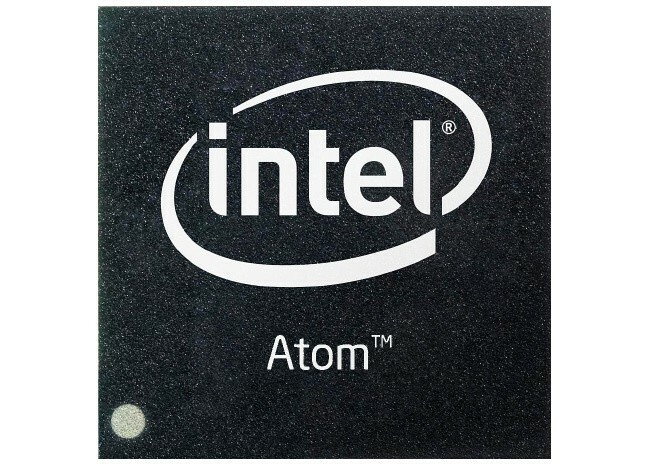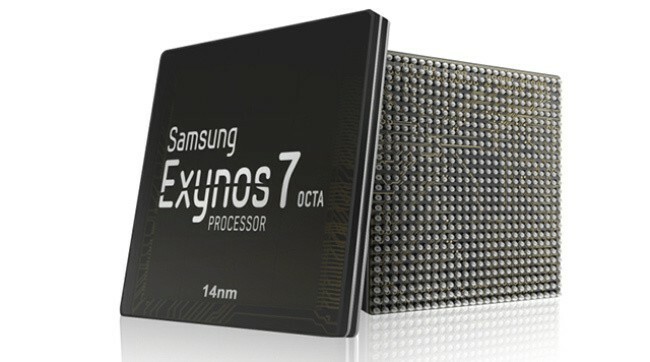The feature of mobile processors is their ability to function on a single battery with minimal body heat. But it often happens that the chip shows a high performance, but very quickly discharges the battery. Conversely, productivity can be slightly lower, but at the same time energy efficiency increases. Therefore, judging the advantage of one chip over another is not always relevant. Mobile processors are built on a multi-core architecture. The presence of more kernels increases the number of tasks performed simultaneously, provided that the software is optimized.
This article presents the rating of the mobile processors in order of increasing performance.
10
Intel Atom Z3775D

The Intel Atom Z3775D opens the top ten mobile processors for performance. The four-core chip is designed for tablets running Android and Windows. Z3775D belongs to the Bay Trail-T family. Thanks to a quad-core processor running at a frequency of 1.46 to 2.39 GHz, the Z3775 is significantly faster than the previous Intel Atom Z2760 processor.
9
Intel Atom Z3775

Ninth place went to quad-core processor with a frequency of 1.46-2.39 GHz Intel Atom Z 3775, designed for smartphones. Optimized 22 nanometer process P1271 with tri-gate transistors demonstrates increased speed and energy efficiency in comparison with the previous Atom Z 2770.
8
Intel Atom Z3785

Four-core mobile processor for tablets and smartphones on Anroid and Windows Intel Atom Z 3785 took the eighth position in performance. SoC, operating at a frequency of 1.49 to 2.41 GHz, is built on a part of the Bay Trail-T platform. Thanks to the optimized 22nm process, in combination with tri-gate transistors, performance and power savings have improved compared to the previous generation. The processor cores built on the Silvermont architecture show a performance 50% higher, thanks to the use of the payline, the optimization of the branch prediction module, the expansion of the decoders and the increase in the buffer.
7
Intel Atom Z3795

The sixth place is occupied by the processor, intended for tablets Windows and Android, Intel Atom Z 3795 .The four-core chip operates at a frequency of 1.59 to 2.39 GHz. An optimized 22nm process processor using Tri-Gate transistors improved performance and reduced power consumption compared to the previous Atom series. Performance Z 3795 is designed primarily for work with the office application and browser, so it is not enough for resource-intensive tasks.
6
Qualcomm Snapdragon 808 MSM8992

Mobile processor 808 Qualcomm Snapdragon MSM8992 , specifically designed for tablet devices and smartphones based Android, has 6 cores , Adreno graphics card 418 with 2 × 32- bit controllermemory LPDDR3-1866, Bluetooth 4.1, UMTS and LTE. Based on ARM big. LITTLE, which combines various processor cores for optimal combination of performance and power consumption, the 808 MSM 8992 combines two fast core Cortex-A57 with a clock speed of up to 2 GHz, with a performance that is 30% higher than the previous processorfrom this series.
5
Qualcomm Snapdragon 810 MSM8994

Fast eight-core processor Qualcomm Snapdragon 810 MSM 8994 , designed for tablets and smartphones, produced by 28-nm process technology. It uses two groups of 64-bit computing cores with the architecture of Cortex-A57 and Cortex-A53.If necessary, all Snapdragon 810 cores can work simultaneously. There is an Adreno 430 graphics accelerator, a two-channel LPDDR4 memory controller, Wi-Fi modules( 802.11ac + MIMO), Bluetooth 4.1, 3G and LTE.Accelerator Adreno 430 is able to cope with any games in the resolution of Full-HD and higher.
4
Intel Atom x7-Z8700

Mobile processor Intel Atom x 7- Z 8700 , introduced in 2015, uses four cores of Cherry Trail. Compared to earlier processors from this series, the new Intel Atom x 7- Z 8700 has a number of unconditional advantages. Debugged architecture, 14-nm process technology with a clock speed of 2.4 GHz allows you to achieve high performance while maintaining low heat dissipation. The LPDDR3-1600 memory controller and the HD Graphics( Cherry Trail) graphics card that supports DirectX 11.2 are integrated and includes 16 computational units( shaders) with a frequency within 600 MHz. Atom x 7- Z 8700 can be used for laptops and tablets, as well as for smartphones.
3
ARMv8 Apple A9

The third place in the list is a 64-bit dual-core ARM microprocessor with the architecture ARMv8 Apple A 9 .It is manufactured on a 14-nm FinFET technical process. Chip A9, which is a 2-core SoC, with a frequency of 1.8 GHz, received performance gains of up to 70% in total and about 90% in graphics over the previous generation of chips( Apple A8).The power consumption of the chip is reduced by 35% and its size has decreased by 15%.
2
Samsung Exynos 7420 Octa

The second place is located Samsung Exynos 7420 Octa .The mobile processor was introduced in 2015 with the Samsung Galaxy S6 device.7420 Octa uses eight cores based on the big. LITTLE architecture. Overall performance is quite high and it can be compared to Snapdragon 810 from Qualcomm or Tegra K1 from Nvidia. Production according to the norms of 14-nanometer technological process also allows to reduce power consumption against the background of earlier developments( 20 nm or 28 nm).As a full-featured on-chip( SoC) system, the Examos 7420 Octa also includes many additional components, including the ARM Mali-T760 MP8 graphics accelerator, LPDDR4 fast memory controller and various communication modules.
1
Apple A9X

Apple A 9 X from Apple tops the rating of the best mobile processors. It is manufactured according to the technical process of 16-nm FinFET at TSMC plants. The processor core " Twister " represents the third generation of 64-bit ARM -cores, which operate at frequencies up to 2.26 GHz. Compared with the chip Apple A8X, twice the memory bandwidth was increased. According to Apple, the new chip has 1.8 times more performance in office tasks than the A8X, used in particular in the iPad Air 2. The chip area is estimated at 147 mm2 by Chipworks. The built-in 3D accelerator PowerVR Series7 with 12 clusters is used. LPDDR4 memory is connected to the system via a 128-bit wide bus, the total bandwidth is estimated at 51.2 GB / s. The chip contains an M9 coprocessor for processing data from sensors.
